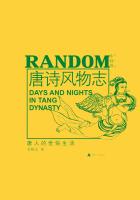A person who undertakes his own building must hire separately all his workmen, he must watch them and check their demands for payment; he must buy his materials from many quarters, and he must hire, or dispense with the use of, expensive machinery.He probably pays more than the current wages; but here others gain what he loses.There is however great waste in the time he spends in bargaining with the men and testing and directing their work by his imperfect knowledge; and again in the time that he spends in finding out what kinds and quantities he wants of different materials, and where to get them best, and so on.This waste is avoided by that division of labour which assigns to the professional builder the task of superintending details, and to the professional architect the task of drawing plans.
The division of labour is often carried still further when houses are built not at the expense of those who are to live in them, but as a building speculation.When this is done on a large scale, as for instance in opening out a new suburb, the stakes at issue are so large as to offer an attractive field to powerful capitalists with a very high order of general business ability, but perhaps with not much technical knowledge of the building trade.They rely on their own judgment for the decision as to what are likely to be the coming relations of demand and supply for different kinds of houses; but they entrust to others the management of details.They employ architects and surveyors to make plans in accordance with their general directions; and then enter into contracts with professional builders for carrying them out.But they themselves undertake the chief risks of the business, and control its general direction.
4.It is well known that this division of responsibility prevailed in the woollen trade just before the beginning of the era of large factories: the more speculative work and the broader risks of buying and selling being taken over by the undertakers, who were not themselves employers of labour; while the detailed work of superintendence and the narrower risks of carrying out definite contracts were handed over to small masters.(1*) This plan is still extensively followed in some branches of the textile trades, especially those in which the difficulty of forecasting the future is very great.Manchester warehousemen give themselves to studying the movements of fashion, the markets for raw materials, the general state of trade, of the money market and of politics, and all other causes that are likely to influence the prices of different kinds of goods during the coming season; and after employing, if necessary, skilled designers to carry out their ideas (just as the building speculator in the previous case employed architects), they give out to manufacturers in different parts of the world contracts for making the goods on which they have determined to risk their capital.
In the clothing trades especially we see a revival of what has been called the "house industry," which prevailed long ago in the textile industries; that is, the system in which large undertakers give out work to be done in cottages and very small workshops to persons who work alone or with the aid of some members of their family, or who perhaps employ two or three hired assistants.(2*) In remote villages in almost every county of England agents of large undertakers come round to give out to the cottagers partially prepared materials for goods of all sorts, but especially clothes such as shirts and collars and gloves; and take back with them the finished goods.It is however in the great capital cities of the world, and in other large towns, especially old towns, where there is a great deal of unskilled and unorganized labour, with a somewhat low physique and morale, that the system is most fully developed, especially in the clothing trades, which employ two hundred thousand people in London alone, and in the cheap furniture trades.There is a continual contest between the factory and the domestic system, now one gaining ground and now the other: for instance just at present the growing use of sewing machines worked by steam power is strengthening the position of the factories in the boot trade;while factories and workshops are getting an increased hold of the tailoring trade.On the other hand the hosiery trade is being tempted back to the dwelling-house by recent improvements in hand knitting machines; and it is possible that new methods of distributing power by gas and petroleum and electric engines may exercise a like influence on many other industries.Or there may be a movement towards intermediate plans, similar to those which are largely followed in the Sheffield trades.Many cutlery firms for instance put out grinding and other parts of their work, at piece-work prices, to working men who rent the steam power which they require, either from the firm from whom they take their contract or from someone else: these workmen sometimes employing others to help them, sometimes working alone.
Again, the foreign merchant very often has no ships of his own, but gives his mind to studying the course of trade, and undertakes himself its chief risks; while he gets his carrying done for him by men who require more administrative ability, but need not have the same power of forecasting the subtler movements of trade; though it is true that as purchasers of ships they have great and difficult trade risks of their own.Again, the broader risks of publishing a book are borne by the publisher, perhaps in company with the author; while the printer is the employer of labour and supplies the expensive types and machinery required for the business.And a somewhat similar plan is adopted in many branches of the metal trades, and of those which supply furniture, clothing, etc.















